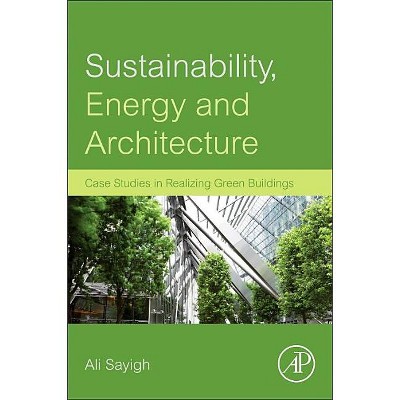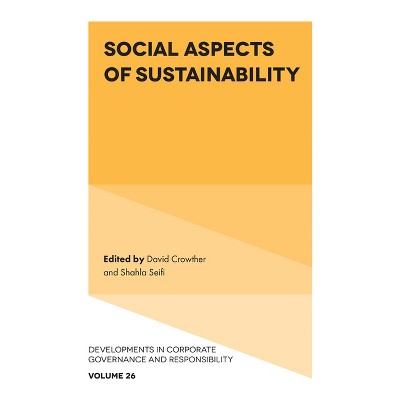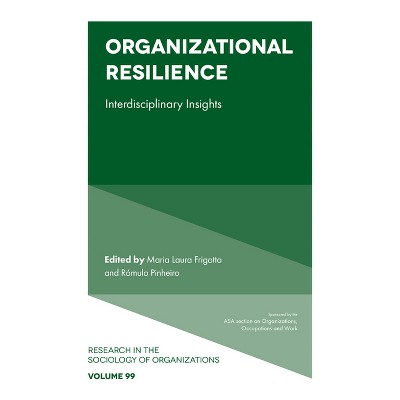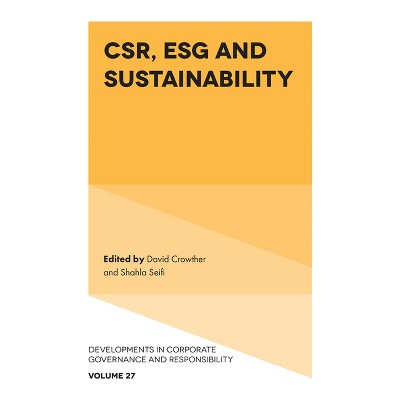Sponsored

Sustainability, Resilience, and Inclusiveness Through Human-Centred Architecture and Design - (Hardcover)
Pre-order
Sponsored
About this item
Highlights
- The way we design and build our cities, buildings, and public spaces takes on critical importance in the face of critical issues such as climate change, social inequality, and rapid urbanization.
- About the Author: Asmaa Ibrahim, Ph.D., is a Professor of urban development at the Arch.
- 256 Pages
- Architecture, Interior Design
- Series Name: Emerald Studies in Sustainable Architecture and Design
Description
About the Book
This edited collection examines the profound ways in which architecture and design can contribute to global imperatives framed by the United Nations Sustainable Development Goals (SDGs), particularly those focused on sustainable cities and communities (SDG 11), affordable and clean energy (SDG 7), and reduced inequalities (SDG 10).
Book Synopsis
The way we design and build our cities, buildings, and public spaces takes on critical importance in the face of critical issues such as climate change, social inequality, and rapid urbanization. Architecture and design not only shape the environments in which we live but also influence energy use, natural resource management, and social inclusion. These disciplines have the potential to play a pivotal role in advancing sustainable development, yet their contributions are often overlooked.
Sustainability, Resilience, and Inclusiveness through Human-Centred Architecture and Design examines the profound ways in which architecture and design can contribute to global imperatives framed by the United Nations Sustainable Development Goals (SDGs), particularly those focused on sustainable cities and communities (SDG 11), affordable and clean energy (SDG 7), and reduced inequalities (SDG 10).
This volume offers a three-part exploration. Part 1 delves into energy efficiency, discussing innovations like biomimicry for zero-energy buildings and IoT-integrated systems in educational spaces. Part 2 bridges sustainability and heritage preservation, showcasing AI-assisted designs and adaptive placemaking strategies. Finally, Part 3 presents real-world case studies, from Saudi Arabia's sustainable design frameworks to the impact of the pandemic on residential spaces in Egypt. With fresh insights and empirical evidence, this collected edition sets a new agenda for integrating human-centered approaches into sustainable design and architecture. Providing a vital resource for academics, policymakers, architects, and urban planners, Human-Centered Architecture and Design underscores the urgent need for collaboration across disciplines to create a built environment that supports thriving, resilient, and inclusive communities.
About the Author
Asmaa Ibrahim, Ph.D., is a Professor of urban development at the Arch. Dep. Faculty of Engineering, Cairo University and the Dean of the College of Architecture & Design at Effat University. She has fourteen years of experience in strategic regional and urban planning projects in UN HABITAT, GOPP, and GIZ with a focus on community development, gender programming and regeneration policies in historic districts, and new urban expansions and more than 20 international publications in the field of sustainable urbanism.
Anna Visvizi, Ph.D. (dr hab.), economist and political scientist, Professor at the SGH Warsaw School of Economics, and Visiting Professor at Effat University. Seasoned editor, researcher, recognized author, and accomplished project manager, Professor Visvizi has extensive experience in academia, think-tank and government sectors in Europe and the US, including the OECD.
Mady Mohamed, Ph.D., Associate Professor of Architecture, joined Effat University in Fall-2014. He received his PhD degree at Dundee School of Architecture, UK in July/2009. He has more than 20 years of academic and practice experience. Through his private firm, Mady participated in the design and construction for several projects, and he was the sole architect and the main architectural/LEED consultant for different residential, office, medical and educational buildings.
Mohammed F. M. Mohammed, Ph.D., is an Associate professor of architecture and design. He received his Masters and Ph.D. in Architecture from Cairo University, Egypt in 1999, 2004 respectively. Dr. Mohammed has taught Architecture and Design in Egypt at Cairo University between 1995 and 2009. Also, he has taught Architecture and Design in KSA at Umm Al-Qura University between 2009 and 2013. He is currently teaching courses in capstone project and Design Studios at Effat University, Saudi Arabia.
Shipping details
Return details
Frequently bought together
Trending Non-Fiction

















